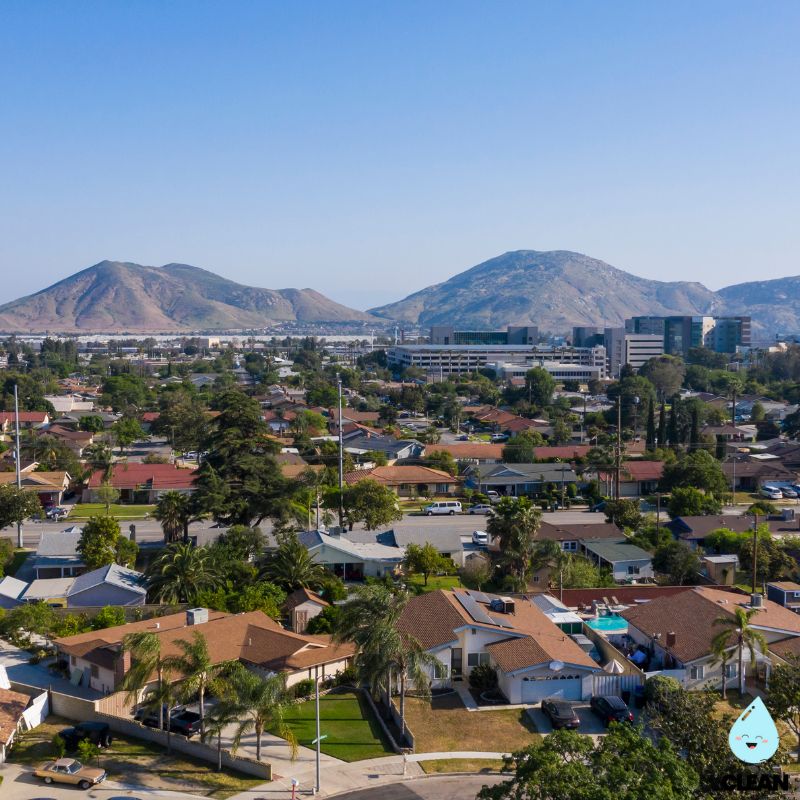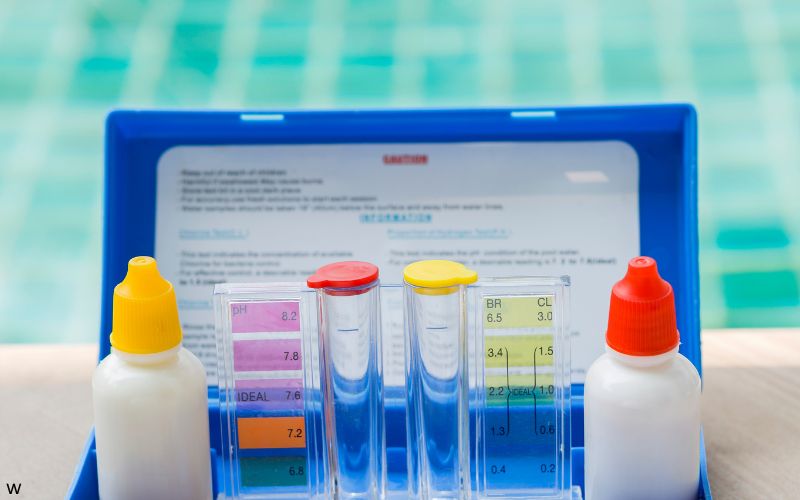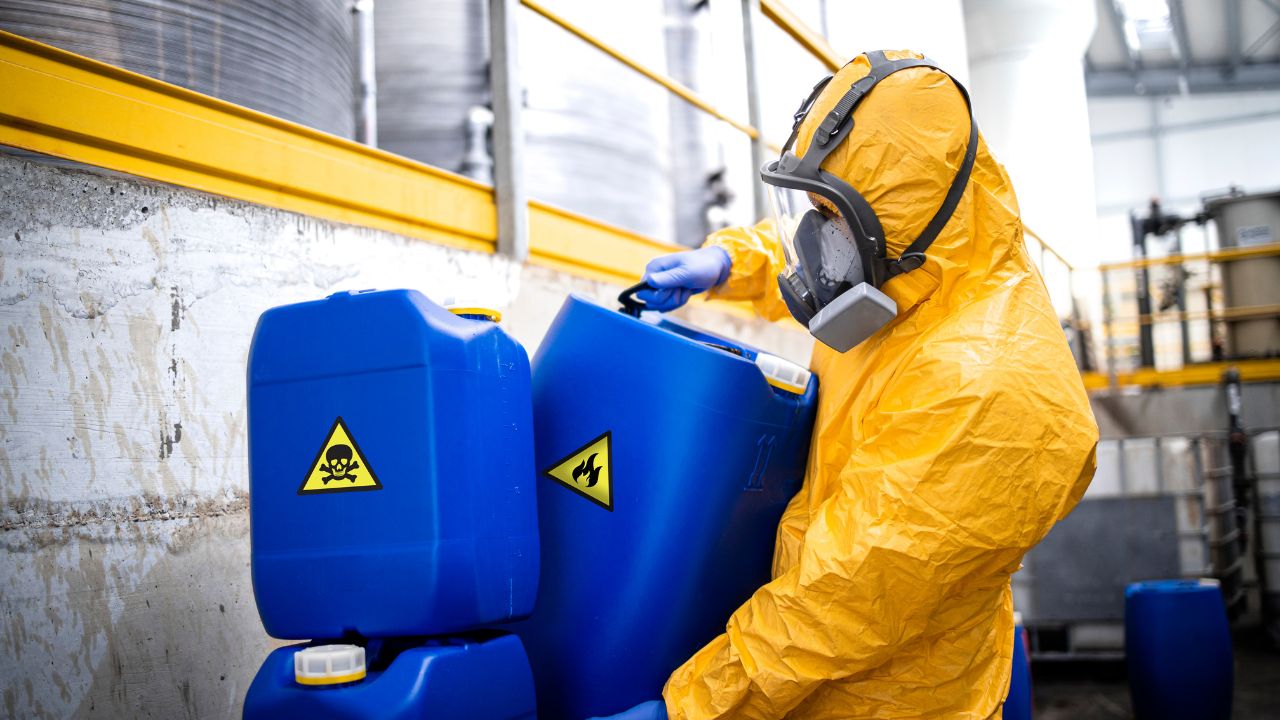Fontana Water Quality at a Glance
serious concerns
Is Fontana Water Safe to Drink?
Generally Meets Standards, But Major Concerns – While Fontana’s water meets federal compliance standards, arsenic levels are 82 times above EWG health guidelines. The water comes from multiple sources including Lytle Creek, groundwater basins, and California State Water Project. High levels of disinfection byproducts and water hardness are additional concerns requiring filtration.
⚠️ Key Concerns for Fontana Residents
- Arsenic Contamination: Naturally occurring arsenic at extremely high levels (82x EWG guidelines) – cancer risk from long-term exposure
- Disinfection Byproducts: Haloacetic acids (HAA5) at 56x guidelines, HAA9 at 297x guidelines – cancer-causing chlorination byproducts
- Water Hardness: High mineral content affecting appliances and requiring additional treatment for home use
- PFAS Testing Gap: No available PFAS testing data, despite California’s widespread contamination issues
Read the full report below for detailed analysis, source water information, and essential filtration recommendations for Fontana residents.
Fontana – California – Water Quality Report 2025: Arsenic Contamination, Disinfection Byproducts & Safety across your city
Fontana Water Company provides comprehensive water services to over 237,000 residents in the City of Fontana and surrounding areas in San Bernardino County. As a private utility regulated by the California Public Utilities Commission (CPUC), Fontana Water Company has delivered water service for over 75 years. The system includes 31 active groundwater production wells, local surface water supplies from Lytle Creek, imported water from the California State Water Project, and a distribution network of over 700 miles of pipelines with 27 storage tanks providing more than 33 million gallons of water storage capacity.
While Fontana’s water meets federal compliance standards, significant concerns exist including arsenic levels at 82 times above EWG health guidelines and extremely high disinfection byproducts (HAA5 at 56x guidelines, HAA9 at 297x guidelines). Water sources include Lytle Creek surface flow, wells in the Lytle Basin, Rialto Basin, Chino Basin, and the “No Man’s Land” groundwater basin. The Sandhill Surface Water Treatment Plant processes surface water from Lytle Creek, blending it with California State Water Project water before treatment and disinfection. As one of the fastest-growing communities in the Inland Empire, Fontana faces ongoing challenges with water quality issues that require resident awareness and potentially home filtration systems.

Fontana Water Quality: Current Status (2024-2025)
Latest Testing Results
- Federal Compliance Status: For the latest quarter assessed by the U.S. EPA (April 2024 – June 2024), tap water provided by San Gabriel Valley Water Company – Fontana was in compliance with federal health-based drinking water standards.
- Arsenic Contamination: Independent testing found arsenic levels at 82 times above Environmental Working Group health guidelines, representing a significant long-term health concern despite federal compliance.
- Disinfection Byproducts: Haloacetic acids (HAA5) detected at 56 times health guidelines and HAA9 at 297 times guidelines, both byproducts of the chlorination treatment process.
- Consumer Confidence Reports: Fontana Water Company is required to test water quality and publish annual Consumer Confidence Reports by July 1st for the previous calendar year.
Water Sources
- Groundwater Wells: 31 wells in and around the City of Fontana producing groundwater from the Lytle Basin, Rialto Basin, Chino Basin, and No Man’s Land groundwater basins.
- Lytle Creek Surface Water: Surface flow from Lytle Creek begins at the Intake in Lytle Creek Canyon, flowing through gravity-fed pipelines to the Afterbay and then to the Sandhill Surface Water Treatment Plant.
- Imported Water: Water from the California State Water Project purchased from the Inland Empire Utilities Agency and San Bernardino Valley Municipal Water District, with emergency supply available from Cucamonga Valley Water District.
Treatment Technology
- Sandhill Surface Water Treatment Plant: Processes surface water from Lytle Creek, blending it with California State Water Project water before comprehensive treatment and disinfection.
- Multi-Source Treatment: The system treats water from multiple groundwater basins using filtration and disinfection technologies, though current treatment is insufficient to address arsenic and disinfection byproduct concerns.
- Quality Challenges: Fontana Water Company faces significant water quality challenges due to naturally occurring arsenic and the formation of disinfection byproducts during treatment processes.
Infrastructure Modernization
- Distribution Network: The system encompasses over 700 miles of pipelines ranging from 2 inches to 42 inches in diameter, with 27 storage tanks providing 33+ million gallons of storage capacity.
- Rate Modernization: San Gabriel Valley Water Company filed for revenue requirement increases to fund infrastructure improvements, with Test Year 2023-2024 requesting $9.2 million (11.3%) for system upgrades.
- Regional Collaboration: Fontana’s water providers work together through partnerships with the Inland Empire Utilities Agency, including participation in regional water supply programs.
Customer Protection Initiatives
Fontana Water Company provides customer support through various programs, including updated bill payment services launched in July 2023 with secure online, phone, and text payment options. The utility maintains customer service at 909-822-2201 for water quality concerns and service issues. Given the significant arsenic contamination and high disinfection byproduct levels, residents are strongly advised to consider home filtration systems certified to remove these specific contaminants. Fontana Water Company’s commitment to transparency includes annual water quality reports, though residents should be aware that federal compliance does not guarantee optimal health protection.
Urgent Recommendations for Fontana Residents

Test Your Water
Given the extremely high arsenic levels (82x health guidelines) found in Fontana’s water, consider independent water testing for your home. Read Fontana Water Company’s annual Consumer Confidence Reports and contact customer service at 909-822-2201 for any water quality concerns or unusual taste, odor, or color issues.

Conserve Water
With California’s new permanent water conservation regulations taking effect in 2025, consider water-efficient landscaping and appliances. The Inland Empire faces some of the steepest conservation targets, so proactive conservation will help avoid future restrictions while reducing exposure to contaminated water.

Install Home Filtration
Due to extreme arsenic contamination and high disinfection byproduct levels, home filtration is highly recommended. Use NSF-certified filters specifically rated for arsenic removal (NSF/ANSI 53 or 58) and disinfection byproduct reduction. Reverse osmosis systems are most effective for arsenic removal.

Stay Informed on Regulations
Follow updates from the California Public Utilities Commission regarding rate changes and service improvements. Fontana Water Company operates under CPUC regulation, which ensures transparent rate-setting and service quality standards for private water utilities, though current standards allow dangerous contamination levels.

Report Issues
Contact Fontana Water Company Customer Service at 909-822-2201 for water main breaks, pressure problems, billing questions, or quality concerns. Office hours are Monday-Thursday 7:30am-5:30pm, alternating Fridays 7:30am-4pm, located at 15966 Arrow Route, Fontana, CA 92335.
Frequently Asked Questions
Is Fontana’s tap water safe to drink?
While Fontana’s tap water meets federal and state drinking water standards, it contains concerning levels of contaminants that pose long-term health risks. Independent testing found arsenic at 82 times above health guidelines and disinfection byproducts at extremely high levels.
Fontana Water Company is required to conduct regular water quality testing and publish annual Consumer Confidence Reports by July 1st each year. The utility works closely with the California State Water Resources Control Board Division of Drinking Water to ensure compliance with federal standards. However, these standards may not provide adequate protection against long-term health effects from arsenic exposure and disinfection byproducts. Home filtration is strongly recommended for drinking water.
How will California’s new water conservation rules affect Fontana?
California’s new permanent water conservation regulations, which took effect January 1, 2025, will impact Fontana residents as part of the Inland Empire region:
1. Conservation targets: The Inland Empire faces some of the steepest water use reduction requirements in California, with cuts potentially averaging 17-30% by 2040
2. Water budgets: Urban water suppliers must develop community-specific water budgets that account for residential, commercial, and landscape use
3. Enforcement: Non-compliance could result in fines up to $10,000 per day for water agencies, with monitoring beginning in 2027 and enforcement starting in 2029
Residents should prepare by investing in water-efficient landscaping, appliances, and conservation practices to help their community meet these new requirements.
What contaminants are found in Fontana’s water?
Based on recent testing data, Fontana’s water system has detections of several contaminants that require serious attention:
• Arsenic: Detected at extremely high levels – 82 times above Environmental Working Group health guidelines, posing cancer risks
• Disinfection Byproducts: Haloacetic acids (HAA5) at 56x health guidelines, HAA9 at 297x guidelines – cancer-causing compounds from chlorination
• Fluoride: Present in the water supply, both naturally occurring and potentially added for dental health
• Aluminum and Manganese: Naturally occurring elements that are monitored for health compliance
• PFAS Status: No testing data available, despite widespread PFAS contamination across California water systems
While detected contaminants are within federal compliance limits, the extreme levels above health guidelines pose serious long-term health risks requiring protective action by residents.
Who provides water service in Fontana?
Fontana receives water service from multiple providers depending on location:
Primary Providers:
• Fontana Water Company: The largest provider, serving over 237,000 customers as a private utility regulated by the CPUC
• Cucamonga Valley Water District (CVWD)
• West Valley Water District (WVWD)
Treatment Services:
• Inland Empire Utilities Agency (IEUA): Provides water treatment and sewer services for much of the city
Use the City of Fontana’s online map at fontanaca.gov/3032/Utilities to identify your specific water service provider based on your address. The city’s collaborative approach ensures reliable water service across different areas while maintaining regional water supply partnerships.
Quality News About Your Water
Get the comprehensive water quality news coverage you need with our dedicated US Water News Service. From coast to coast, we deliver in-depth reporting and expert analysis on PFAS contamination, EPA regulatory changes, infrastructure developments, and emerging water safety issues affecting communities nationwide. While mainstream media only covers the biggest stories, we provide the detailed, ongoing coverage that helps you understand the full scope of America’s water challenges. Whether you’re a concerned citizen, water professional, or community leader, our daily updates and analytical insights keep you informed about the issues that matter most to public health and environmental safety.
Primary Contaminants of Concern

Arsenic Contamination
Source: Naturally occurring arsenic from geological formations in bedrock and soil, concentrated in Fontana’s groundwater and surface water sources
Health Effects: Long-term exposure linked to increased cancer risk (skin, lung, bladder), cardiovascular disease, diabetes, and developmental effects in children
Current Levels: Detected at 82 times above Environmental Working Group health guidelines despite meeting federal compliance EPA Limit: 10 ppb maximum contaminant level, though health advocates recommend much lower exposure levels

Disinfection Byproducts
Source: Formed when disinfectants such as chlorine react with naturally occurring organic matter in groundwater and surface water sources during treatment processes
Health Effects: Long-term exposure to elevated levels may increase risk of certain cancers and potentially affect liver, kidney, and central nervous system function
Current Levels: Haloacetic acids (HAA5) at 56 times health guidelines, HAA9 at 297 times guidelines – among the highest contamination levels documented EPA Limits: 80 ppb for total trihalomethanes (TTHMs) and 60 ppb for haloacetic acids (HAA5)
Please read – our information
The information presented on cleanairandwater.net is compiled from official water quality reports, trusted news sources, government websites, and public health resources. While we strive for accuracy and thoroughness in our presentations, we are not scientists, engineers, or qualified water quality professionals.
Our mission is to present water quality information in an accessible, real-world format that helps people understand what’s in their water and make informed decisions about their health and safety. We believe that complex environmental information should be available to everyone in a format that’s easy to understand.
We make every effort to ensure our content is current and accurate, but we cannot guarantee that all information is complete or error-free. This website should not replace official communications from your local water utility or health department. We always recommend consulting official sources for the most up-to-date information regarding your specific water system.
Clean Air and Water is not liable for any unintentional errors, omissions, or outdated information. The content on this site is provided for informational purposes only and should not be considered professional advice.


